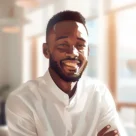Sure, here’s the formatted content with headings:The rise of open source software has deeply influenced the tech and cybersecurity sectors. This transformation, rooted in the free software movement, has redefined software development, implementation, and online systems protection.Free software laid the groundwork for user freedoms relating to software usage, modification, and distribution. This evolved into open source, a key element in today’s digital infrastructure, fostering innovation through collaborative development and posing unique security challenges and benefits.Open source software often leads to more secure software due to the wide pool of developers finding and fixing vulnerabilities. However, its adoption requires strategies to monitor contributions and protect against vulnerabilities.Overall, open source’s impact extends to the way security is addressed in our connected world, requiring an open yet vigilant approach to cybersecurity to maintain software integrity and reliability.
The Genesis of Open Source
The Free Software Movement and Its Modern Legacy
Richard Stallman’s frustration with non-modifiable software led to the GNU Project and the Free Software Foundation (FSF) in 1985. The principle of software freedoms established by the FSF has profoundly impacted the digital domain.This philosophy continues to influence the tech world, promoting user rights, open collaboration, and fostering a digital commons in contrast to proprietary software models.
Transition from Free to Open: Coining “Open Source”
Christine Peterson coined the term “Open Source” in 1998, clarifying the confusion around the term ‘free’. The Open Source Initiative (OSI) adopted and popularized the term. OSI also established criteria for software to be considered open source.Open source standards align with collaborative software development environments, where the term suggests innovation, shared effort, and community benefit.
Open Source Licenses and Milestones
Different Flavors of Open Source Licenses
Licenses like the GNU GPL, Apache 2.0, MIT, and BSD determine how software can be used, modified, and distributed. These licenses ensure the freedoms promised by open source.The Linux kernel, the Mozilla project, and Wikipedia, along with consumer technologies like Android and GitHub, highlight open source’s role in software development.
Open Source in Cybersecurity
The Significance of Open Source for Cyber Resilience
Open source software is crucial in cybersecurity, with tools like OpenSSL playing significant roles. Government agencies’ involvement in the development and sharing of open source security tools demonstrates open source’s significance in managing cybersecurity risks.
Debates on Security and Practicality
Open source’s security is debated, with incidents like Heartbleed and Shellshock prompting criticism. However, advocates highlight the community’s responsiveness to security threats and the overall positive impact of open source on software quality and security.
Regulatory Perspectives and Future Directions
Open Source in Legislation
The 2023 “Securing Open Source Software Act” embeds open source into national cybersecurity strategies. It recognizes open source as crucial for innovation and cyber threat protection.
Challenges in the Wake of New Regulations
The Cyber Resilience Act (CRA) may affect open source contributors, signaling increased legal responsibilities. Open source communities face challenges in balancing their principles with new regulatory demands.
Open Source’s Ongoing Journey in Tech and Cybersecurity
Evolving Perspectives on Open Source’s Value
Open source’s value and impact in the tech space continue to grow, showing its transition from a niche to a key player in tech development.
The Integration and Impact of Open Source
The open-source model underpins adaptability and strength in cybersecurity, pointing to a future where collaborative and shared knowledge is crucial.In conclusion, open source has become a symbol of human ingenuity and collective problem-solving, continuing to shape the future of technology and cyber defenses.









